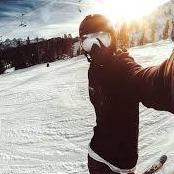Search the Community
Showing results for tags 'catfish'.
-
Trout fishing is very adventurous. There's a lot you need to know if you want to fish for trout from a lake near the shore. Trout will instinctively congregate in areas where food, shelter, and other necessities are plentiful. Trout fishing in the lake is very efficient. Many areas stock their lakes with trout, which means there is plenty to catch. But trout fishing in a lake is very different from fishing in moving water. Even experienced river and stream anglers must vary their bait and technique. Pristine nature, icy clear waters and fishing techniques will test your skills. However, not all trout fishing involves fording wild rivers, and you can catch them from the lake shore. Find the Trout’s food Like any fish in a lake, trout have some very specific needs. The most important thing is the food. In moving water, trout can stay anchored in one place and let the current carry food to them. But in lakes, trout have to swim around to hunt. Unlike catching trout in moving water which means finding pools and eddies, catching trout in a lake often means finding trout food. Know the water temperature There is also a question of temperature and oxygenation. Like all fish, trout are cold-blooded, meaning their metabolism depends on the temperature around them. They thrive at certain temperatures, but anything above 70ºF can be fatal to them. If the surface water gets too hot, they start moving deeper. Keep this in mind when you are fishing during the warmer weather months. Cold water also contains more oxygen than warm water. But that doesn't mean the deeper and colder you are in the lake, the more oxygen you have. The water at the bottom doesn't usually circulate with the water at the top during the warmer months, meaning it doesn't get replenished with oxygen when it's colder. Instead, the lake is divided into three basic water cycle zones. Knowing these areas of the lake is key if you want to catch the most trout. And by the cold lake from shore, the Ocoopa Union 5s rechargeable hand warmers are super ideal for a fisher. The hand warmer would deliver comfortable warmth to you in a flash, which is sufficient for the afternoon at the edge of the water. The low speed can provide up to 15 hours of heat, the Ocoopa Union 5s would accompany you all day long to keep your hands warm in the pockets. Moreover, the power bank mode of the rechargeable hand warmers is practical, you never know, it can be used someday. Check the terrain You can usually assume that what you see on the surface of the water reflects what is underwater. The steep slope down to the lake shore may continue below. If you see an island in the middle of the lake, that's an underwater mountaintop. It's not perfect. But paying attention to the surrounding terrain will tell you a lot about the lake. Trout certainly know the terrain. The steep slope toward the shore allows trout to inhabit the cooler parts of the lake while being close enough to catch food on the shoreline if needed. The shallows are an excellent breeding ground for trout. A thin strip of water between two islands or between a coast and an island is a bottleneck for small fish that trout like to catch. When to fish for Trout in a lake Wait for warming weather Note that it’s warming, not heat. Once the weather gets hot enough, trout become sluggish and retreat into cooler water. But water takes longer to heat up than the surrounding air. If the weather has been cool for a while, the warm stretches will kick-start the trout's metabolism and they will be hungry. This makes spring and early summer the best times of year to fish for trout, especially on the lake shore. They have been eating very little all winter and need to start refueling. They will hunt farther, shallower and less picky than at any other time of year. For lake and brook trout, which prefer colder water than their relatives, this feeding frenzy could happen soon after many lakes freeze over. Rainbow and brown trout occur a little later, but all species will be very active for a week or two after the ice disappears. Dawn and dusk The best time to fish for trout on the lake shore is almost always in the morning. This is when trout are most active. Mornings are also coolest in the shallow waters closest to shore, which trout prefer. The next best time is closer to dusk as the water starts to get cold again.Midday fishing can be hit or miss, depending on the weather. Overcast days will extend your window by controlling the sun's heat and brightness. Look for clouds Trout don't like bright sunlight. They are more active on cloudy days. Rainy days are even better. Rain washes bugs, worms, and other tasty treats into the water. Rainwater is also rich in oxygen, which provides energy for trout. The stream widens, bringing more nutrients and oxygen into the lake. Take this opportunity to set up some trout near the inlet of the lake shore stream. They'll be there for dinner, which means you should too!
-
To diversify fishing, I take a cat and a dog with me) I am interested to watch them when I pull a fish out of the water))) Do you often do this?
-
A few friends and I decided to try our hand at something we've never done before - targeting Channel Catfish through the ice. This definitely proved to be a bit of a challenge and took me out of my comfort zone. After getting a few bites and fish up the hole we started to figure out a method that worked for us. I don't feel like it's the most productive way to catch these fish but it worked out for us that day. At the end of the day everyone in our group caught quite a few fish, had their rods doubled over and left with smiles on our faces. These fish put up a heck of a fight on Walleye gear! I will definitely try to get back up there this season.
-
See details and join the conversation at the link below. http://fishingminnesota.com/forums/topic/210112-st-cloud-area-get-together-22418/
-
- horseshoe lake
- catfish
-
(and 1 more)
Tagged with:





